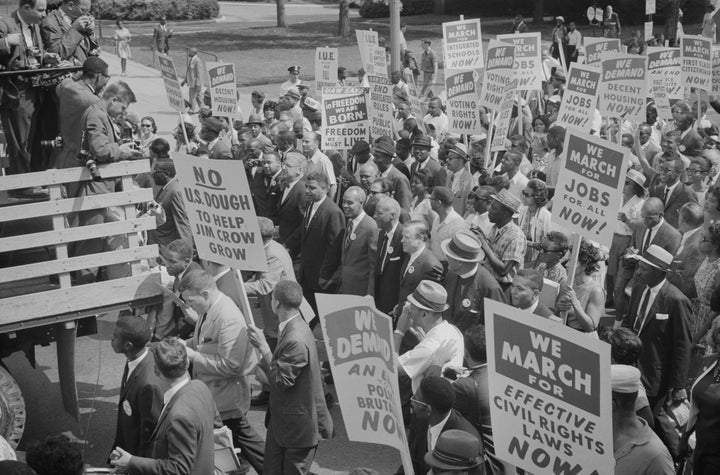
Co-authored with Kara Penn
Whether you want to create the next iPhone or transform elementary schools, changing the world takes more than a great idea. You need to work with others, navigate the system, and learn from your own experience. It’s all about figuring out what works.
The tales we tell about trailblazers often overlook this truth. In TED talks, corporate lore, and news stories, all too often it’s the brilliant initial idea that gets the glory. The work that follows—trial-and-error testing, building coalitions, and figuring out how to spread adoption—gets short shrift.
Our quest to understand how innovators unleash the full impact of their world-changing ideas uncovered striking insights. Take Jim Barrington. An IT executive in the multinational pharmaceutical firm Novartis on the eve of his retirement might seem an unlikely agent of disruptive change. But Jim had gleaned a career’s worth of experience along with a passion for improving the availability of his company’s low-cost malaria medicine. Never mind that improving information flow among front-line clinics and supply depots in Africa was not exactly what an IT executive in a pharmaceutical firm traditionally does. Jim found a radically different way to use his tech smarts and the relationships he’d built over a career, scraping together the funding and stitching together new collaborations to launch a unique mobile phone-based social enterprise for getting malaria medicines to people who most needed them. As would-be system innovators can learn, in his case bringing the idea to fruition entailed painstaking testing and refining, an ongoing process of building internal and external coalitions, and careful financial management.
Jim Barrington is a system innovator. His tribe of social entrepreneurs and organizational intrapreneurs work within the system to achieve disruptive change.
Successful system innovators, we’ve learned, use some key tactics. Could any of these help you to change the world?
Learn by doing, every day
The U.S. Civil Rights Movement unleashed radical change in a few short years. In the late 1950s, it would have been impossible to predict which tactics would move a nation forward in its beliefs, laws, and actions. Today, the extent and rapidity of the Civil Rights effort offers inspiration to anyone contemplating the work that is still to be done. Our analysis reveals that it wasn’t simply luck that allowed its leaders to succeed during those tumultuous years; nor did they have any special foreknowledge of what to do. Instead, they invested in shared habits of thinking and action: they made hypotheses and tested them, drew out and shared important lessons, then adjusted tactics.
In 1961, after a long and difficult summer, Dr. Martin Luther King and his collaborators took a hard look at their nine-month battle against segregation in Albany, Georgia. Despite their concentrated efforts and a daily practice of planning, reviewing, and adjusting their activities, the campaign hadn’t worked. Stepping back, the team mined their shared experience and their own past discussions to identify its lessons. Concluding that their strategy was too vague and left people feeling despair, the Civil Rights leaders formulated a more visible, tactics-focused plan. Dr. King explained, “[W]hat we learned from our mistakes in Albany helped our later campaigns in other cities to be more effective. We never since scattered our efforts in a general attack on segregation, but focused upon specific, symbolic objectives.”
The Movement’s next campaigns proved far more effective, and its leaders continued their practice of daily reflection and periodic reviews.
As a system innovator, you embrace complexity. And in doing so, you’ll need to learn in the moment and adjust. What can you apply from Dr. King and the U.S. Civil Rights Movement?
Build a team that talks. Cultivate a network of trusted advisors to analyze findings and surface new possibilities.
Manage the timing of pivots. Define how long you will stay the course, then review your experience and revisit your assumptions to find the insights to guide the next steps.
Routinize ongoing assessment. Look at shifts in approach as intentional experiments to explore your new ideas. To test your hypotheses, you must assess results. Nurture the leadership habit of assessing what works, and what doesn’t, to enable small-scale changes on a routine basis along with deeper shifts at pivot points.
Harness every mistake. Use every failure to launch the next iteration informed by what you’ve learned. Develop the skill to frame these hard-earned insights in ways that are data-driven and honest—and inspirational.
Borrow from the past and experiment at every step
System innovators must glean every available lesson from the past in order to move forward. The Bangladeshi non-governmental organization BRAC provides a great example of how to do this. By several measures the world’s largest non-profit, BRAC is astoundingly cost-effective and self-reliant. Not every program that the organization launches is successful, but what it chooses to retain and grow is both efficient and effective.
An effort from the past decade illustrates how. Having done much to advance maternal health in rural settings, in 2007 BRAC launched Manoshi, a new program to improve maternal and neonatal health in cities. BRAC staff took everything they could possibly apply from their past experience in villages, including its own documentation and research reports, then tested them in urban environments. Some ideas didn’t work in the same way, but with rapid data collection and a willingness to change course, these were quickly dropped or morphed. At the same time, while continuing to test and explore new ideas for improving birth outcomes, BRAC expanded the reach and scale of its maternal services. Thanks to this bold approach—simultaneously exploring and scaling—by 2011, the maternal death rate had fallen markedly in this country of 160 million people.
To launch projects, BRAC teams often start quickly, trying out new ideas that are informed by past experiences, including a clear-eyed look at the limitations revealed by earlier projects. And from the outset, at a point when others would be looking only at implementation, the organization begins to assess each new effort’s early results, providing the fodder for the next pivot.
What can BRAC’s recipe for success with the Manoshi program teach you?
Document for the next iteration. To take everything you can from past experience—including from your own efforts—you need access to people, materials, and documentation from previous efforts, including those that met difficulties.
Refine your understanding. Expand your understanding of the conditions for success by anticipating and testing how things change in different environments. Scaling up to new markets or settings provides new data that adds nuance to this understanding.
Keep an open mind. Apply relevant insights to relentlessly improve your ideas at every stage. Treating every new iteration as provisional allows you to discard bad ideas for better ones as you learn.
If you’re seeking to create change that endures, multiplies, and adapts, you are a system innovator.
To accomplish your goals, you’ll need to keep working with others, borrowing from your own experience and others’, and relentlessly test and iterate upon every idea. You’ll need to build a team of advisors and collaborators who will help you to extract the right lessons from your successes and your failure. And you’ll need to keep your eyes on the prize. Knowing that systems innovators from our past—and from across the world—have accomplished remarkable change, can you find ways to do the same today?
Anjali Sastry is a senior lecturer at the MIT Sloan School of Management. Kara Penn is owner and principal consultant at Mission Spark and an alumna of MIT Sloan. They are coauthors of the book Fail Better: Design Smart Mistakes and Succeed Sooner.
